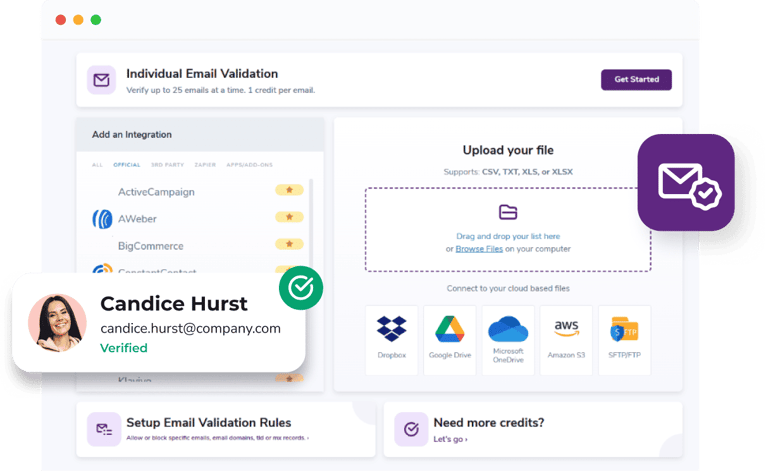Guía de correos electrónicos no válidos
¿Cómo evita que se agreguen correos electrónicos no válidos a su lista de correo electrónico?
Ya sea que lo sepa o no, los correos electrónicos no válidos están en su base de datos y listas de correo. Descubra de dónde vienen y cómo influye la limpieza de lista de correo electrónicoⓘEl acto o la capacidad de mantener una lista o base de datos de correo electrónico que consta de direcciones de correo electrónico válidas y activas..

Preguntas frecuentes
Una dirección de correo electrónico no válida es cualquier dirección que no puede recibir un mensaje de correo electrónico entrante. Una dirección de correo electrónico puede no ser válida por diversos motivos, entre los que se incluyen sintaxis o formatos no válidos, errores tipográficos, un nombre de usuario o dominio inexistentes o una configuración que no acepta correos electrónicos entrantes.
La validación de correos electrónicos puede evitar que los correos electrónicos no válidos ingresen a su base de datos. Cada vez que adquiera una nueva dirección de correo electrónico para un contacto, valídela con una herramienta de verificación y validación de correos electrónicos para asegurarse de que la dirección sea legítima y esté configurada para recibir su mensaje entrante.
Cualquier mensaje de correo electrónico enviado a correos electrónicos no válidos resultará en un rebote duro. Su correo electrónico se le devolverá con un mensaje que indica que la dirección de correo electrónico de destino no es un buzón válido. Una alta tasa de rebote causada por demasiados rebotes duros daña negativamente su reputación como remitente y su entrega de correos electrónicos.
Puede validar una dirección de correo electrónico con cualquier herramienta de validación de correo electrónico. Ingrese la dirección que desea validar y el servicio realizará una serie de verificaciones y le devolverá un resultado en segundos. Si el resultado es un correo electrónico no válido, compruebe si hay errores tipográficos u otros errores de entrada. Si no hay ninguno, deseche la dirección de correo electrónico por seguridad.


